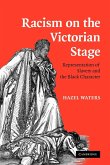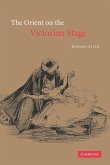Examines the figure of the Victorian actress in the context of the cult of Classical sculpture.
Gail Marshall argues that the professional and personal history of the Victorian actress was largely defined by her negotiation with the sculptural metaphor, and that this was authorized and determined by the Ovidian myth of Pygmalion and Galatea. Drawing on evidence of theatrical fictions, visual representations and popular culture's assimilation of the sculptural image, as well as theatrical productions, she examines some of the manifestations of the sculptural metaphor on the legitimate English stage, and its implications for the actress in the later nineteenth century. Within the legitimate theatre, the 'Galatea-aesthetic' positioned actresses as predominantly visual and sexual commodities whose opportunities for interpretative engagement with their plays were minimal. This dominant aesthetic was effectively challenged only at the end of the century, with the advent of the 'New' drama, and the emergence of a body of autobiographical writings by actresses.
Review quote:
"Valuable footnotes; essential illustrations....General readers, graduate students, researchers, and professionals will be grateful."
Choice
Table of contents:
List of illustrations; Acknowledgements; Introduction; 1. Victorian Pygmalions; 2. Acting Galatea, 'the ideal statuesque'; 3. George Eliot, Daniel Deronda, and the sculptural aesthetic; 4. Very lovely Greek statues: the London stage in the 1880s; 5. Living statues and the literary drama; Conclusion: writing actresses; Notes; Select bibliography; Index.
Gail Marshall argues that the professional and personal history of the Victorian actress was largely defined by her negotiation with the sculptural metaphor, and that this was authorized and determined by the Ovidian myth of Pygmalion and Galatea. Drawing on evidence of theatrical fictions, visual representations and popular culture's assimilation of the sculptural image, as well as theatrical productions, she examines some of the manifestations of the sculptural metaphor on the legitimate English stage, and its implications for the actress in the later nineteenth century. Within the legitimate theatre, the 'Galatea-aesthetic' positioned actresses as predominantly visual and sexual commodities whose opportunities for interpretative engagement with their plays were minimal. This dominant aesthetic was effectively challenged only at the end of the century, with the advent of the 'New' drama, and the emergence of a body of autobiographical writings by actresses.
Review quote:
"Valuable footnotes; essential illustrations....General readers, graduate students, researchers, and professionals will be grateful."
Choice
Table of contents:
List of illustrations; Acknowledgements; Introduction; 1. Victorian Pygmalions; 2. Acting Galatea, 'the ideal statuesque'; 3. George Eliot, Daniel Deronda, and the sculptural aesthetic; 4. Very lovely Greek statues: the London stage in the 1880s; 5. Living statues and the literary drama; Conclusion: writing actresses; Notes; Select bibliography; Index.








